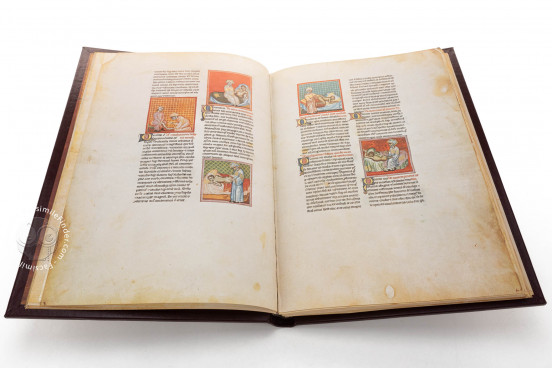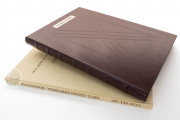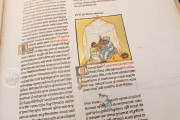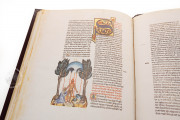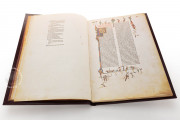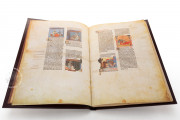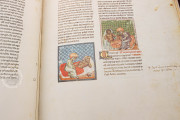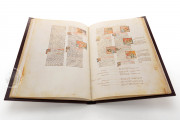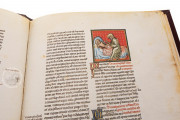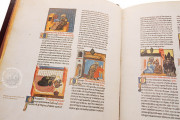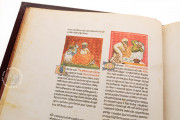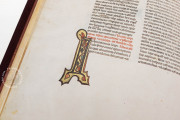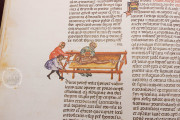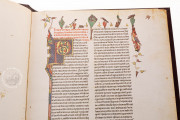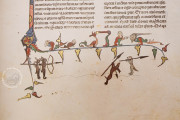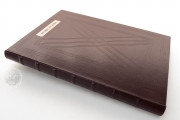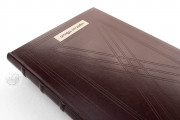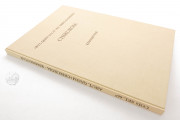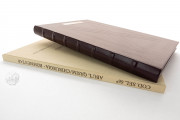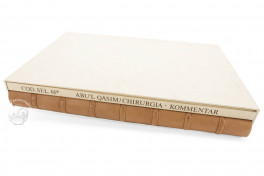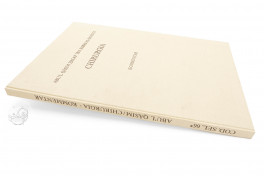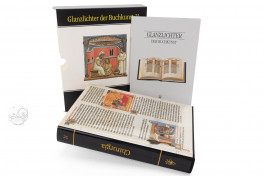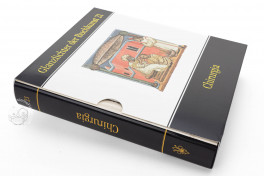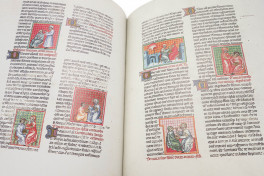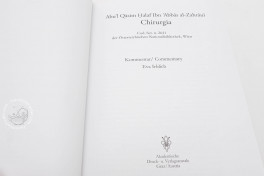The textbook of surgery written by the Arab physician Abu al-Qasim Khalaf Ibn Abbas az-Zahrawi stood for nearly 500 years as the leading handbook in this field of medicine. It constitutes the oldest and most important link between Greek classical and late classical medicine and the European medicine of the high Middle Ages. Over long stretches of the Middle Ages, the Occident had lost the medical knowledge of Greco-Roman classical teachings.
The Arabs who preserved the classical ideas in the domains of poetry, philosophy and science, brought this knowledge back to the western world, especially in the field of surgery where Arab medicine had made great progress. The most famous representative in this field was Abu al-Qasim, court physician of the Western Umayyad Caliph al-Hakam II (961-976) and author of writings which later became widely known.
The Latin translation of this Arabic textbook on surgery was richly illustrated and lavishly decorated, thus underlining the estimation of the western world for what was then this most sensational of texts. In all, 68 miniatures form the decorative apparatus of this bibliophile manuscript, illustrating individual methods of medical treatment and instruments in all their details.
Besides these miniatures, which might have been derived from Arab models, numerous gilded initials (in total 227) bear testimony to the flawless quality and great significance of the manuscript, both in medical history and in the history of art.
Abu al-Qasim: an Arab Physician of Renown
Abu al-Qasim is thought to have been born around the 30s or 40s of tenth century near Cordoba in Spain (precisely in al-Zahra). The Arabic scholar thus stemmed from the Western Umayyad Caliphate which reached its climax during the tenth century. As the personal physician to Caliph al-Hakam II, he had the opportunity to enlarge his reputation of physician far beyond the scope of his own work. His writings were widely acknowledged and preferred even to the teachings of the Greek medical authority Galen.
The Contents of the Book
Chirurgia is the last chapter of a huge, comprehensive work (Kitab al Tasrif liman `ajiza `an-al-ta´alif) comprising the reception of Greek medical knowledge on the one hand and the physician's own experience from decades of medical practice on the other hand. Out of 30 chapters of Abu al-Qasim's lifework, which treats all domains of medicine in an encyclopaedic form, only Chirurgia and three more sections were translated into Latin, leaving this huge œuvre widely undisclosed to the western world.
Chirurgia, however, went down in high medieval medical history as the most important work in this field. Chirurgia is composed of three books and decorated with numerous miniatures to illustrate diverse methods of treatment. In the first book, which deals with cauterisation, 40 miniatures show the application of the glowing iron to different parts of the body. The second book explains section, midwifery, bloodletting, the healing of wounds, and the application of leeches and cuppers, all illustrated in 27 miniatures, one of which shows the treatment of hydrocephalus (fol. 17r). The third book on the rejoining of bones and treatment of fractures and dislocated limbs contains the well-known and often reproduced miniature of the rack (fol. 76v).
The Artful Decoration
The miniatures are mostly square in shape, many of which present surgery scenes, at their center the physician, dressed in a long, flowing garment with wide sleeves and a turban on his head. To underline his prestige and dignity, he wears the wise men's beard and gold ornamented, noble vestments.
The natural depiction of patients is impressive, not to say stunning, for they are pictured in different positions and making natural gestures, allowing their pain and fear before treatment to be read on their faces. The miniatures are presented before three different backgrounds, all by the hand of an anonymous artist. There are flat backgrounds in the stencil-pattern style, architectural and landscape backgrounds, and finally blank parchment grounds on which the figures freely roam.
A rich palette of luminous colors as well as gold embellishments and gold leaf grounds lend the images their three-dimensional vivacity, thus making the illustrations look like precious works of art.
The text was written in the fourteenth century by a diligent hand with black ink, in littera textualis formata with a strong tendency towards rotunda. Especially the ornamental page (fol. 3r), with its sumptuous initial P and scrollwork full of winged fabulous animals, birds, spear-wielding dogs and arrow-shooting hares, is of unequalled charm.
An Epoch-making Medical Work
Abu al-Qasim's Chirurgia was translated from Arabic into Latin by Gerard of Cremona (1114-1187), one of the foremost members of the famous school of translators of Toledo, where numerous Greek writings were transliterated into Latin from Arabic sources.
It was through translation of Chirurgia that Latin Europe was given the opportunity to access a text which combined European medical knowledge in the field of surgery with highly specialized Greek and Arab findings. Indeed, the Latin version of Chirurgia offered the western world a precious insight into new and revolutionary methods, thus constituting a truly epoch-making work of medicine.
We have 3 facsimiles of the manuscript "Book of Surgery":
- Abu´l Qasim Halaf ibn Abbas al-Zahraui - Chirurgia facsimile edition published by Akademische Druck- u. Verlagsanstalt (ADEVA), 1979
- Chirurgia (Glanzlichter der Buchkunst series) facsimile edition published by Akademische Druck- u. Verlagsanstalt (ADEVA), 2012
- La Cirugía facsimile edition published by Editorial Casariego, 1993

